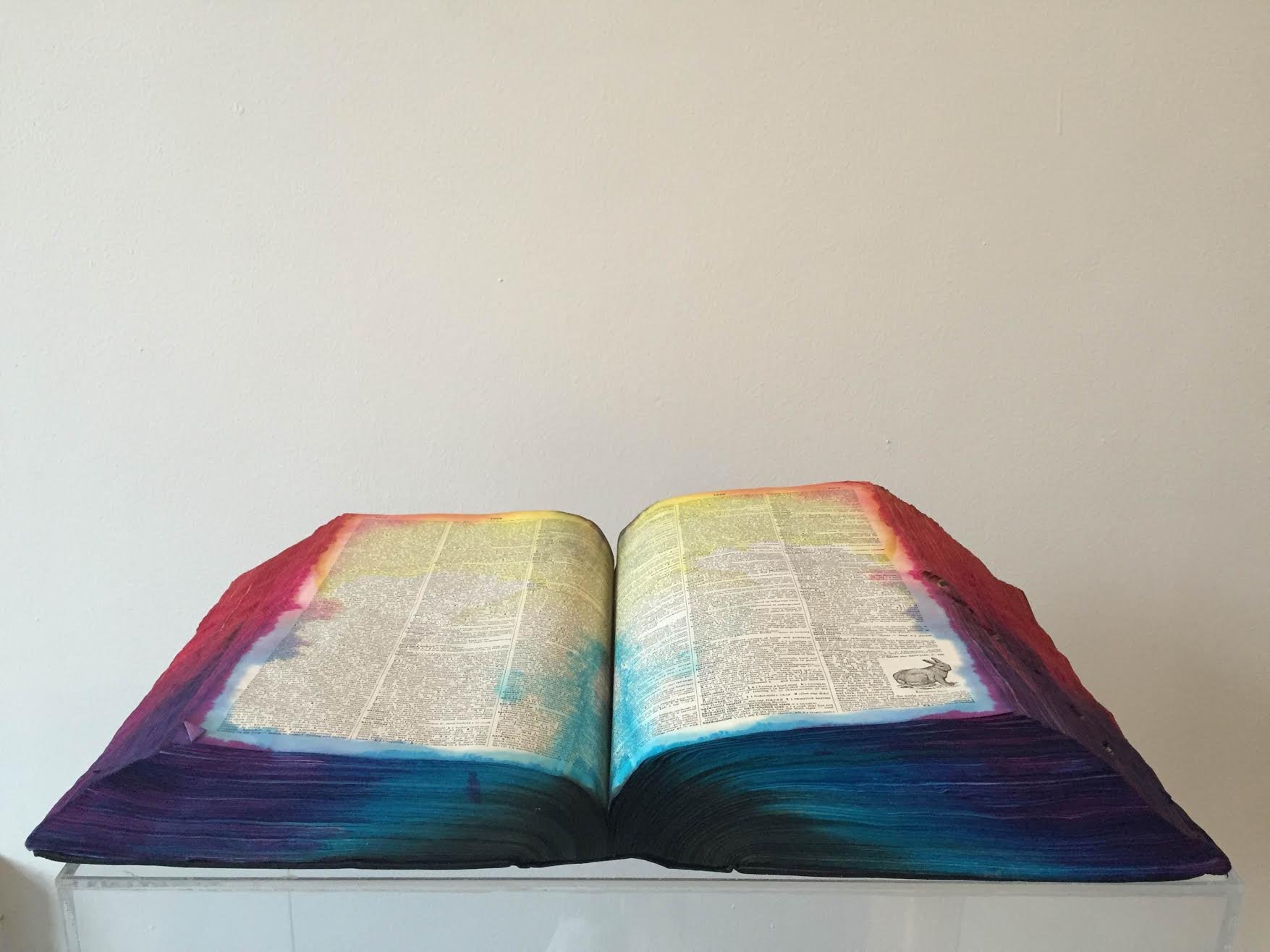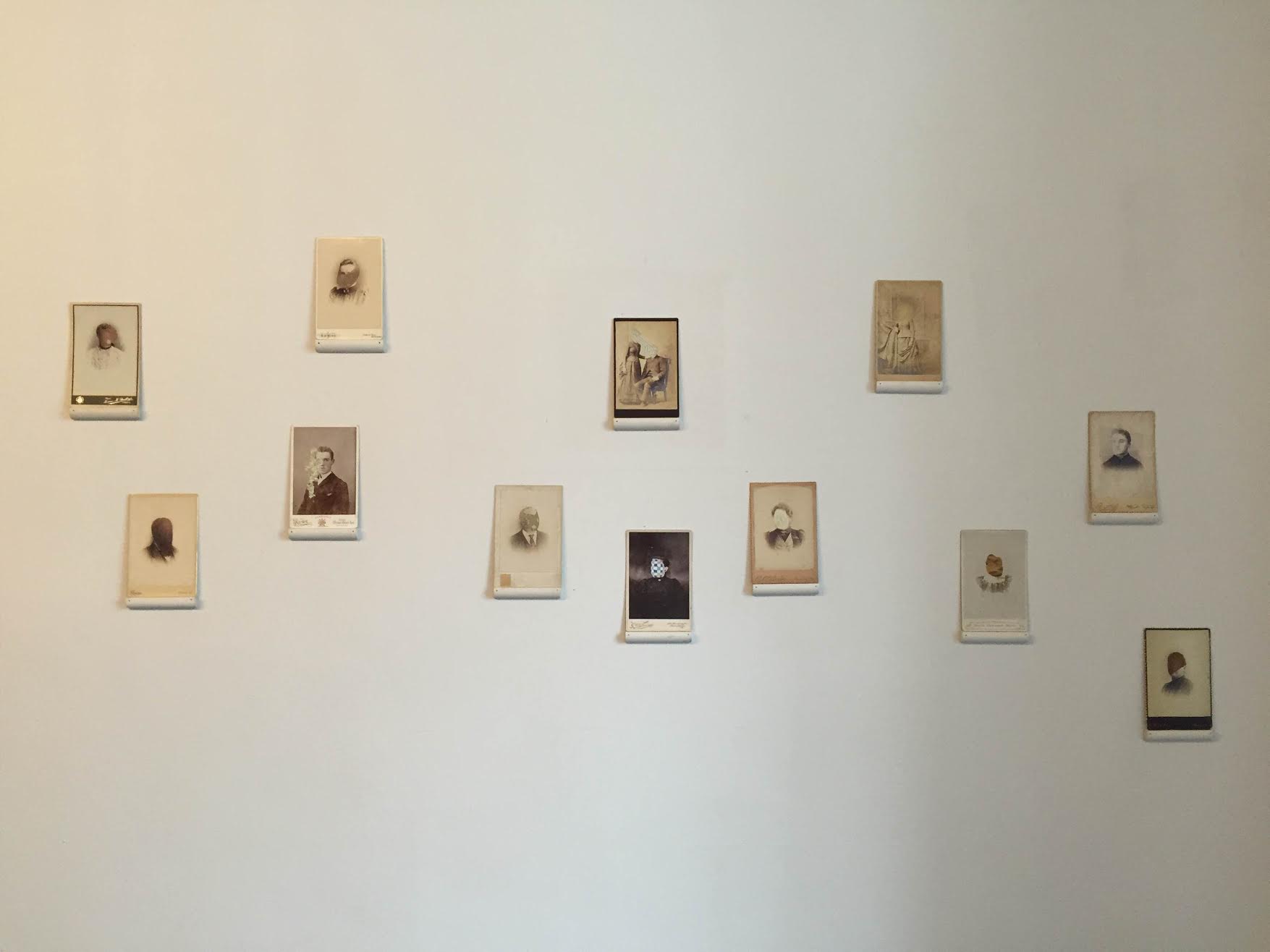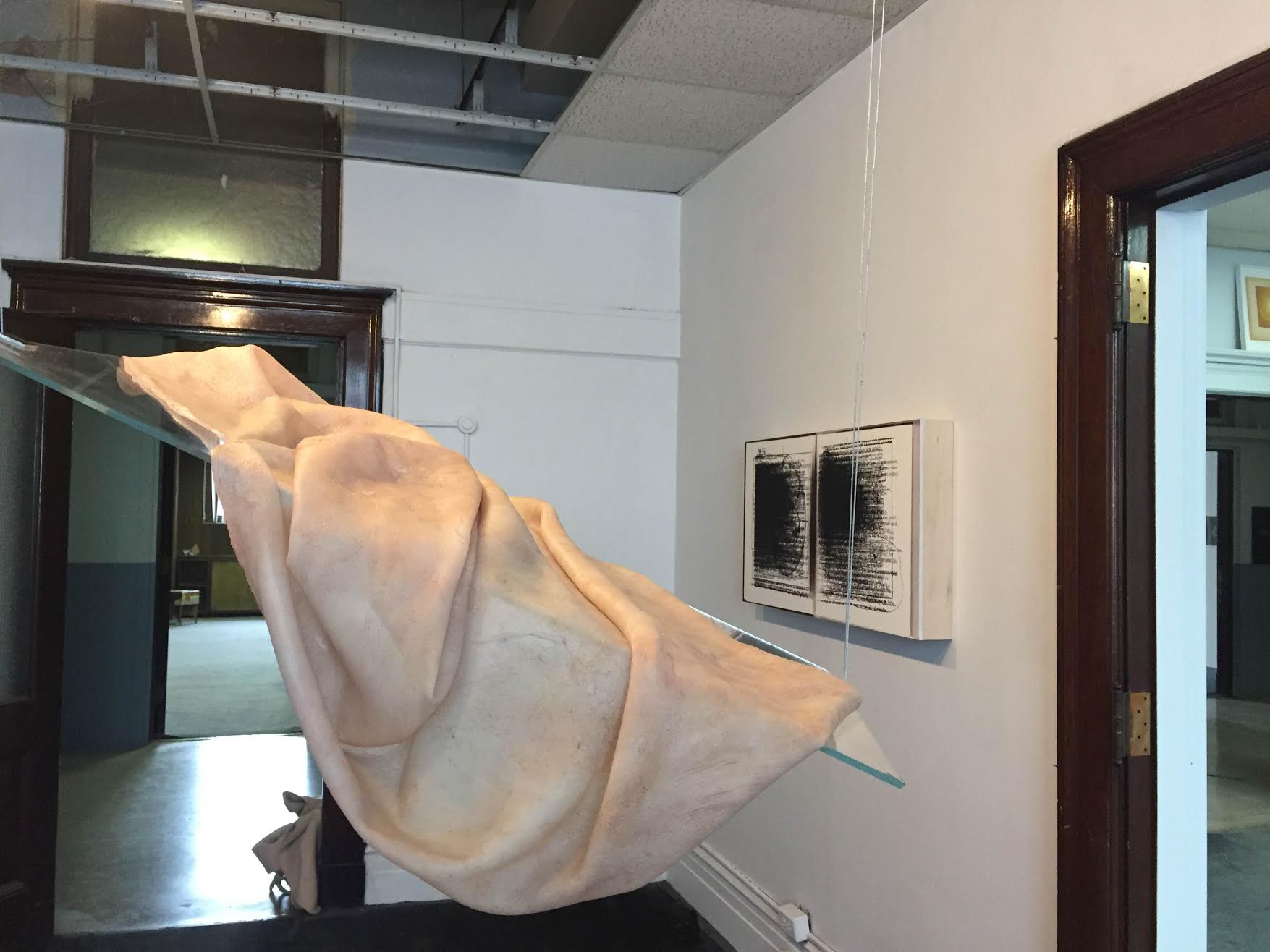Spring/Break Art Fair, now in its fifth year, offers a decidedly more radical version of the visual onslaught of the Armory Art Fair, also starting this week. Founded by artists and cute married couple Andrew Gori and Ambre Kelly (of creative supergroup The They Co.) in 2015, Spring/Break allows its curators (many of whom are artists themselves) total control. The fair is something of a socialist art wonderland, where the bottom line is truly to inspire its viewers and perhaps even subvert societal capitalist norms. As a result, this fair brings together major but decidedly confrontational artists with exhibitions and works from Barbara Kruger, Anne Spalter (who’s stunning installation will be the first thing you see in the fair’s lobby) Greg Haberny, David Shapiro, and more will be shown alongside equally famous and radical artists from other mediums like filmmakers Jim Jarmusch and Tom DiCillo. Hopefully the big name talent will draw viewers into the booths of the unknowns as well, because this festival has a massive pool of startling untouched talent (I will recount the best of this exhibit throughout the week).
One exhibit I was particularly excited about; Double to Erase is curated by a couple of young poets just out of NYU Gabrielle Jensen and Michael Valinsky. Innately interested in the use of text and the examination of language, these bright young kids centered their Spring/Break offering around “the palimpsest,” a text constituted in the erasure of another, or “creation as violence” as the duo likes to explain it. Being someone whose passion for aesthetics was birthed out of ‘70s horror films and punk rock, violence is always I’m drawn to within art. I had to have Jensen and Valinsky clarify their vision further, so we met up at Café Grumpy in Midtown to discuss some days before the opening of the fair. (Spring Break opens today to the public).
LEHRER: First thing, the title of the shows is interesting - Double to Erase. What is that all about?
GABRIELLE JENSEN: It’s how in creating something there’s also a violence in the concept that we’re working with that empowers us. Like writing over a writing.
LEHRER: What interests you about that concept and what does it mean for you?
MICHAEL VALINSKY: The theme of the fair this year is “copy paste” and our background is in art theory so we were thinking in terms of language and text and different kinds of text that exists. We start to think of the palimpsest as necessary layering that happens in meaning making. In that layering we became aware of a violence that came with erasing the original and the space that opens up for the new work.
GABRIELLE JENSEN: We were thinking about what a text can be and how the idea of what a text is is changing right now. Especially in art making and how language and text are appearing in art. Double to Erase came from the idea of a palimpsest which is a writing over writing or a making over making. Sometimes what happens is in creating doubles or a second layer of a text or a work of art then the whole thing becomes erased into something else.
LEHRER: What sparked this whole line of thinking and started the conceptual process behind the exhibition?
MICHAEL VALINSKY: NYU! We met at NYU and we were sort of operating within the same wave length academically. So these conversations are the kind of conversations we’ve been having for a long time. They just kind of came to fruition when the light bulbs lit and we realized that we should apply what we’d been talking about.
LEHRER: That’s what’s cool about Spring Break though, it’s super conceptual. But it’s almost like the people who go and check it out are looking to be challenged conceptually so it becomes a more palatable way to deliver a conceptual idea.
MICHAEL VALINSKY: Yeah definitely. Spring Break really allows curators to play and take risks and show work that’s not safe. Work that’s going to challenge you, that appeals to a very large spectrum of people. You have people from all ages and industries that come to this fair. They’re interested in the alternative way of addressing art. Amber and Andrew, the directors, do a really good job of creating that space for us.
GABRIELLE JENSEN: We were never asked to play with or change our concept or the language. Because the language that we’re working with is pretty specific. I feel like in other contexts you’d be asked to put it into a more universal language.
LEHRER: For whatever reason, you have other mediums like fashion or music which are constantly seeking for new things. But in art galleries because they have to sell X amount of dollars every single day, you see the same artist doing the same exhibits over and over. So I get super excited when I see a fair like this.
MICHAEL VALINSKY: It’s really cool; you play with a project and once you get approved into the fair then they really let you do your thing. We don’t have the pressure of the white cube and the big gallery environment where everybody has to do something stale.
GABRIELLE JENSEN: A lot of different narratives come out too when you have this freedom. A lot of our artists are more on the emerging side, but one of our artists is represented by a gallery and another has more background in curating. I think it creates a conversation between the works if you have different backgrounds.
LEHRER: Are you guys ever in conversation with the other curators in the fair?
MICHAEL VALINSKY: It’s pretty much like a college orientation when you get there. We arrive and have two days to install our show, and then everybody is in adjacent rooms and we all just kind of get to know each other. We have a week to basically live with each other so we all become friends at the end. It’s really great. Last year I was doing it and I was showing works from relatively emerging artists and across from me were pieces from more established artists and it created a really cool dialogue and I became in touch with the curator.
LEHRER: Were you guys studying to make art too?
GABRIELLE JENSEN: I do performance, and I want to start doing more instillation and stuff. He’s a poet, I’m a poet.
MICHAEL VALINSKY: I’m on the writer side, which I guess is not exclusive to the term, but I don’t identify as an artist.
LEHRER: It seems like all the artists you guys are using seem to have a relationship with space? Or at least in regards to instillation?
MICHAEL VALINSKY: So we have one installation and one sculptural element. Ivana Basic is contributing three sculptures and one skin piece. She’s very interested in the way people walk around and interact with the space and attract the artwork; how it’s placed and how they’re shaped.
GABRIELLE JENSEN: With Vanessa Castro, her previous projects have involved installation, especially involving video as a component of instillation. I’d say Ivana’s definitely create an instillation environment because they’re pillows and they’re on the ground. They’re going to be installed in a way that creates an idea of a spatial barrier.
MICHAEL VALINSKY: Francesca is really interested in poetic space, and her work varies but she’s doing a lot of woven work that is really large scale and has been commissioned in public and private spaces. She’s interested in the sort of trope of the women who weaves. A lot of art institutions made women weave and now she’s sort of translating that into a language for herself. She’s concerned with space and how things are presented and how they read.
Tom Butler is the only male artist, and I discovered his work about three years ago. He is interested in the space within and without a photograph and at what point you enter it. So the grid is pretty important in that sense because you’re kind of put into a system.
LEHRER: Awesome guys thank you so much.
Spring/Break Art Show will be on view from March 2 to March 7, Skylight at Moynihan Station (Main Post Office Entrance) 421 Eighth Avenue, NYC. text and photographs by Adam Lehrer. Follow Autre on Instagram: @AUTREMAGAZINE




